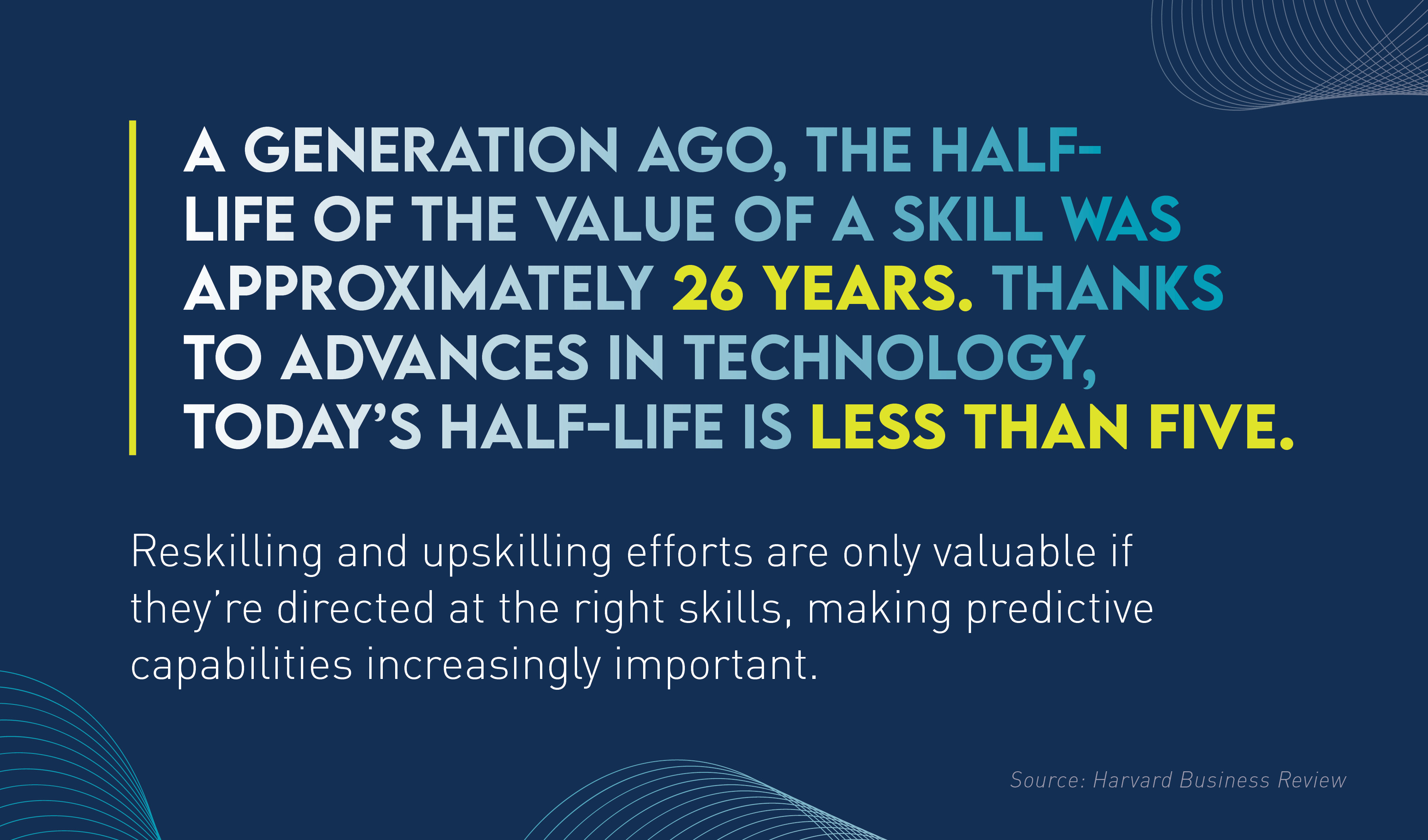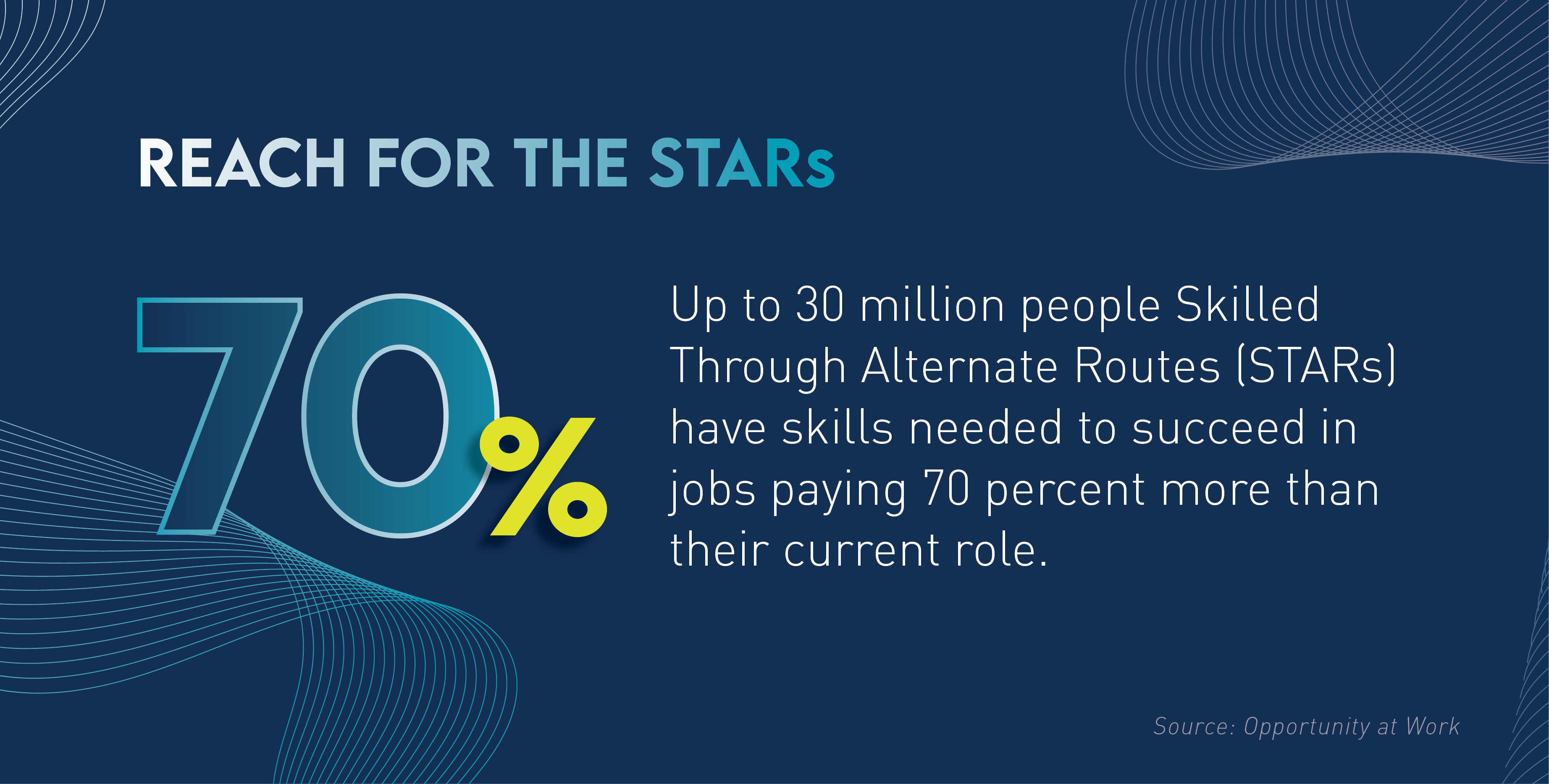space
In 1957, the Soviet Union launched Sputnik, the first artificial satellite, sparking a fierce competition with the United States. And in pursuit of victory, the U.S. took a skills-first approach. Leaders transformed the public education systems to foster a wide and unpredictable range of real-life math and science skills that could bolster the country’s position in the space race.
Eight years later, American Neil Armstrong set foot on the moon. The U.S. considered the space race won, and in the bliss of victory, public support for skills-based public curriculum initiatives waned. These initiatives had worked—so why didn’t they last? Historians surmise they lacked staying power because they’d been created by academic elites without enough input from the learners themselves. Moreover, they’d been initiatives siloed in science, math, and eventually social studies, when they needed to be based in a holistic consideration of the underlying learning approaches and frameworks.
And yet, the original theory stuck: Over the last two decades, skilling initiatives have been lauded as the business world’s silver bullet for speed in a series of consecutive, interconnected races. The issue is that, for many organizations, the skills-first approach is still largely comprised of initiatives rather than being rooted in transformation.
Here’s the difference between an organization with skilling initiatives and a skills-first organization:
Part of a plan or strategy to identify and develop specific skills, limited in scope, scale, or function.
Led by and/or siloed in Human Resources (HR) with little cross-functional integration.
Incorporating leading-edge programs but failing to holistically connect and catalyze all internal talent and external skills sources against the work to be done (current and future).
Reliant upon the proactive engagement of employees, not the predictive push of the organization for the skills it needs.
Restricted by the confines of legacy corporate ladders and restrictive job requirements.
Prioritizes skills and competencies over traditional factors like degrees, job titles, or experience when making decisions about acquisition, development, and deployment.
Utilizes powerful business and enterprise architecture capabilities to connect, align, and manage all the moving parts.
Fosters and relies on alignment between business units; a marriage of the things to be done with skills development and acquisition functions.
Being respected as a long-term objective requiring thoughtful transformation and change management efforts.
Skills-first transformation: Your key to succession planning
Bridging the gap between simply having skilling initiatives and transforming into a skills-first organization is critical for staying ahead in this ever-shifting era. But perhaps even more urgent is the impact it has on today’s leadership pipeline.
Due in part to trends like changing workforce expectations, lightning-fast technological advancements, and general cultural shifts, traditional career paths are crumbling. And it’s putting leadership pipelines in limbo across most industries, as employees opt for cross-functional career leaps and individual contributor roles. The truth is this: Our business landscape is evolving at a pace that’s nearly impossible to keep up with, and traditional talent management strategies are proving obsolete.
Transforming into a skills-first organization offers an alternate route—one that enables your organization to:
- Increase agility and flex at the pace of change to build relevant and in demand skills,
- Identify causes for gaps in your leadership pipeline,
- Invest in the right capabilities for a leadership and workforce that are resilient and responsive.
- Identify a wider/more diverse talent pool—one that brings more creative and innovative solutions to the table, and
- Cut down on training costs by designing an environment of continuous learning that anticipates the needs of the individual, where employees have the time and resources to identify and build relevant or desired skills on their own.
And for your employees, who are likely feeling similar—sometimes confusing—pressures to keep up, this transformation will offer enhanced career clarity. And clarity offers benefits like greater career mobility, advanced growth opportunities, and space for learning and development. For more on this topic, check out this piece.
One small step for man, one giant leap for mankind
Today, traditional talent management structures inhibit full labor potential and make you vulnerable. To better understand why this is, let’s look at six evolving conditions that make a skills-first transformation necessary for attracting, building, and utilizing top talent. And of course, for getting your leadership out of limbo.
The skills you need today may be irrelevant tomorrow, and the skills you’ll need tomorrow are increasingly difficult to predict.
Take skills centered on emerging technologies for example. Prompt engineering was one of the most sought-after skills in 2023, hailed by the World Economic Forum as the “number one job of the future.” Just months later, AI is teetering on the verge of rendering prompt engineering obsolete.

This is just one example of how skill building has become an unpredictable moving target that’s causing many initiatives to fall short. But by transforming into a skills-first organization, a business will have the capabilities and processes in place to swiftly adapt alongside the market and pick up vital skills to stay ahead. We explore the powerful difference between having singular skills and having functional capabilities and processes in our blog, Beyond Skills: Unleashing the Power of Capabilities.
As populations decline, the intense competition for talent will get tougher
By 2033 China’s working-age population is expected to decrease by 39 million people, and the U.K.’s by 10 million, according to population statistics from the United Nations.
And since 2007, the total fertility rate in the U.S. has been well below replacement, propelling the country into a prolonged phase where there are fewer young Americans to replace those retiring. All these facts point to one key truth for many industries: Leaders must find ways to do more with less.
Transforming into a skills-first organization enables this through:
- Cross-functional knowledge sharing
- Rapid skill adoption
- More efficient talent management, planning, and forecasting
- Broader resource potential that includes adjacent talent and candidate pools, and
- Bridging the gap between individual passion and professional practice
It paves the way for the type of organizational resiliency that businesses need as they continue to navigate pressure to deliver with a constricting workforce.
Businesses are pushing back on the paper ceiling
For decades, degree requirements have been a staple of the job market. Unfortunately, these requirements have led to something known as The Paper Ceiling—an “invisible barrier” preventing candidates without degrees from accessing certain occupations.
But it appears that certain industries are pushing back on this issue, relinquishing degree requisites where possible. It’s important to note that for certain career paths, like medicine or engineering, advanced degrees are critical. But for other, non-specialized paths, replacing degree requirements with skills-based hiring offers a proactive solution to companies struggling amidst the ongoing labor shortage.
For those contemplating how to get involved in this in-flight hiring evolution, it comes down to two reasons:
#1. Degree requirements may make it tougher for organizations to achieve their DEI goals and build an inclusive workplace.
Certain demographics are statistically less likely to attain traditional degrees—meaning they are often negatively impacted by traditional four-year requirements. In 2022, White individuals 25-29 years of age were 160 percent more likely than their Black counterparts to hold a bachelor’s degree. That gap jumps up to 223 percent between White and Hispanic/Latino individuals. By being more intentional about degree requirements and eliminating them where possible, your organization will be able to tap into a far more diverse talent pool, create equitable opportunities, and foster an inclusive workplace. Plus, organizations that embody DEI qualities are 2.6 times more likely to have better retention and higher employee engagement—reducing potential leadership turnover.
#2. Eliminating degree requirements creates an exponentially more expansive pool of talent.
And on the heels of the Great Resignation, facing the impending Silver Tsunami of boomer retirements, tapping into a broader pool of workers is just smart business. Many of the skills that businesses are struggling to cultivate are likely being overlooked due to this one requisite. But those who forego traditional paths typically have more real-world experience and knowledge. In fact, one study estimated that up to 30 million workers without four-year college degrees have most of the skills to succeed in better jobs paying 70 percent more.
Employees want more; employers need to listen
Recent workforce trends, like the ones outlined above, have pushed the power pendulum in employees’ favor, pressuring organizations to accommodate. Among things like higher pay and work-life balance, workers are seeking out organizations that will invest in their growth. And the best strategy for meeting this rising demand is by creating and fostering a culture that encourages learning and development (L&D). In one study, 77 percent of respondents stated they would be more likely to stay with their organization if they offered stronger L&D programs.
Today’s employees are not just seeking workplaces that offer internal space and resources for their teams to identify and build skills, though. They’re seeking out organizations that have a supportive culture encouraging them to do so. A skills-first transformation is the best way to foster one such culture and create the opportunities your teams desire—boosting retention rates and securing a wider pool of potential future leaders.
AI needs people
Talk of AI taking over roles is everywhere—it's true that mundane and repetitive tasks are becoming a thing of the past. But organizations should be hesitant to view this as a band-aid to workforce restrictions, because AI needs people. And businesses that want to optimize it will need individuals with the right skills at the helm. Because despite what some may think, artificial intelligence can’t do it all, and the most successful organizations will be the ones that master human-in-the-loop AI utilization.
A skills-first transformation will enable more seamless AI adoption, but for a deeper dive into AI enablement, check out our piece, “The AI-Enabled Enterprise: Your AI ‘Five First.’”
You likely already have the data and technology you need for skills-based hiring
While a range of archaic rules and structures stunt its potential—think rigid corporate ladders and restrictive college degree requirements—most companies already have the data and analytics (D&A) needed to predict and identify the granular skills that match business future needs.
On the technology side, AI-based systems are advancing to make the adaptive, rapid movement of skills more seamless by matching the right person or bot to the right task, creating swarm teams, and sourcing internal and external marketplaces when the skills aren’t readily available.
Does your playbook need a refresh?
As we pointed out above, most organizations already have the tools and resources they need to make a skills-first transformation. The true challenge is having the right knowledge and processes in place to take that leap and reap the benefits. But too many leaders are clinging to an old playbook in today’s totally new game of workforce optimization.
In part two of this series, “Promise over Pedigree,” we’re exploring fresh ways for you to harness what you already have, by connecting the dots across people analytics, partnerships, and cross-team collaboration. And with these actionable insights, you’ll be able to transform a stagnant workforce into one that’s future-ready and resilient. Check it out!
Related Content




